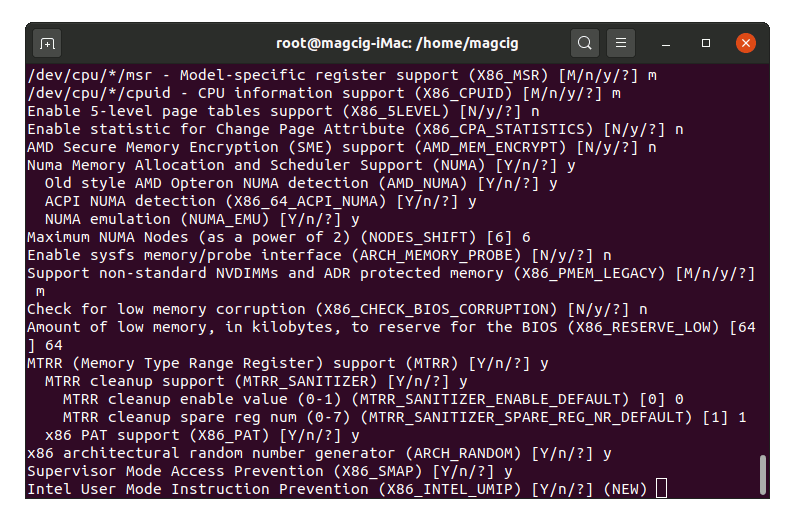Installing
-
5. Configuring Kernel
So now to Configure openSUSE Linux Custom Kernel
First, access the Kernel Source with:cd linux*
Then copy the current Configuration File into the New Kernel Source:
sudo find /boot/ \( -iname "*config*" -a -iname "*`uname -r`*" \) -exec cp -i -t ./ {} \;mv *`uname -r`* .config
In case of a Chrooted System instead yuo may look up the available Kernels with:
ls /boot | grep config
The grep Command refine the output List showing only the entries Matching the Keyword.
Again if needed then fix the Configuration File editing it with nano and commenting out the Line like:sudo nano .config
Use Ctrl+w to search for “CONFIG_MODULE_SIG_KEY” on nano.
And comment out like:#CONFIG_MODULE_SIG_KEY
Ctrl+x to Save & Exit.
Else to make a Custom one then reconfigure the Kernel (Only for advanced Users) with:sudo make menuconfig
For instructions see: How to Configure a Build Kernel.
-
6. Building Kernel
Next to Build openSUSE Custom Linux Kernel
Make it with:sudo make clean
And then:
sudo make rpm-pkg
When prompted if uncertain then simply follow to hit until the end.

Then think to other task to follow because the process will take about a couple of Hours…
Last, to check the builded Images play:sudo ls /usr/src/packages/RPMS/x86_64/ | grep kernel

The Kernel Packages may be situated somewhere else, so in case see: How to Locate Files on System
-
7. Installing Kernel
Finally, to Install openSUSE Linux Custom Kernel
Simply play:sudo su -c "zypper in /usr/src/packages/RPMS/x86_64/kernel*.rpm"
And this setup includes also the Custom Kernel Headers that you don’t will find online…

And finally reboot with:
sudo reboot now
Finally, you should boot into your barely new openSUSE Linux Kernel :)
To check it run:uname -r
And in case of Issue you still can choose the previous one on the GRUB Splash Screen!
-
8. Updating Firmware
How to Update Linux Devices Firmware on GNU/Linux
Especially relevant: this setup is optional and may be required only to make use of some New Device Drivers not available in your current Firmware.
Contents